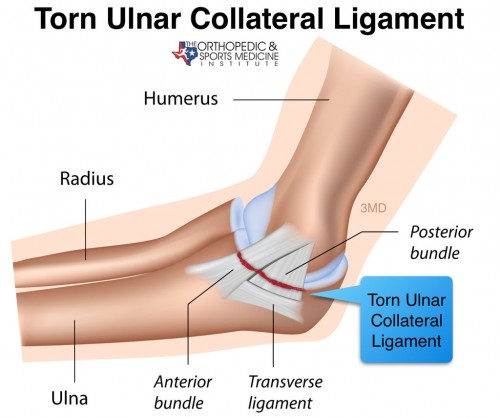
Today, I want to review how to help stabilize and protect pitchers and baseball players’ UCL (also known as the Tommy John ligament) with several exercises we perform here at RPP. Continue reading “How to Protect the Baseball Player’s UCL”

Today, I want to review how to help stabilize and protect pitchers and baseball players’ UCL (also known as the Tommy John ligament) with several exercises we perform here at RPP. Continue reading “How to Protect the Baseball Player’s UCL”

Not all throwing and hitting motions are created equal. Some guys rely more on strength, some guys elasticity (facial tissue) and some are simply genetic “outliers” (there’s that fascia again). But close analysis, in not only numerous studies but also from my own experience at the facility, reveals that there is one common denominator why hard throwers create effortless velocity and command, as well as power hitters creating high exit velos behind the plate.

Today on social media I saw a post by a training facility of a “trainer” manipulating / stretching a 12-year old’s shoulder into external rotation. His reason was because and I quote “the athlete was experiencing arm pain due to inflammation in the shoulder”. Just watching it made me feel like this. Continue reading “Mobility or Stability… Should You Stretch Your Shoulder?”

In Part 1 (click here), we the concept of an excessive trunk tilt, how to identify it and some things physically that could help cause it. In Part 2, we’ll take a look at why it can be harmful to the shoulder and elbow and some things we can do to help get us a little more on the “straight and narrow”. Continue reading “Addressing and Treating Trunk Tilt at Foot Strike — Part 2”

It’s time to start throwing and sure enough, here come the videos of pitchers performing weighted ball holds using mechanics that don’t come close to resembling proper throwing mechanics, no lay back, no whip action, no pronation and poor hip rotation at finish to name a few. So why do many pitching coaches do them? Continue reading “Weighted Ball Holds, Oh No, Not Again!”

As we get closer to the end of another year here at RPP, it seems like a good time to reflect back on 2017, and provide you with a glimpse of where we might be headed in 2018. Continue reading “Where We’ve Been and Where We’re Headed”

Many times, when analyzing video of our young pitchers, I’ll come across an excessive lateral trunk tilt at foot strike. It’s quite common in younger throwers and is characterized by an excessive lean (tilt) contralaterally towards your left side at ball release (if you’re a right-handed pitcher and vice versa). The head becomes tilted, facing away from the driveline and gives the appearance that the athlete is getting ready to launch the ball over a three-story building.
Continue reading “Addressing and Treating Trunk Tilt at Foot Strike – Part 1”
 We are here with Kinnelon’s Paul Cannarella. Paul came to us in the fall of his senior year and has been training with us for almost a year. He graduated from Kinnelon High School this year and unfortunately during this spring season he hurt his elbow. He had Tommy John surgery and he is now on his path to recovery. I thought it could be a great interview and learning experience to hear Paul tell his story first hand.
We are here with Kinnelon’s Paul Cannarella. Paul came to us in the fall of his senior year and has been training with us for almost a year. He graduated from Kinnelon High School this year and unfortunately during this spring season he hurt his elbow. He had Tommy John surgery and he is now on his path to recovery. I thought it could be a great interview and learning experience to hear Paul tell his story first hand.
Continue reading “Interview with Kinnelon’s RHP Paul Cannarella (coming off Tommy John Surgery)”

It’s no secret that the numbers of youth injuries in baseball are staggering. Even with the implementation of pitch counts, youth pitching injuries not only continue to rise but account for many of the injuries ball players eventually suffer later in their careers. Here we go, with my top 9 reasons for pitching injuries… Continue reading “Top 9 Reasons for Pitching Injuries”

It’s that time of year when I go out and watch all my guys (with a great sense of pride I might add) play ball and in doing so, get a chance to watch many other young pitchers on the mound as well. A common thread that I see with many of them is the similarities in the breakdown that happens in the later innings.
More often than not, I believe this is fatigue of the lower half. The pre-mature change in lower extremity kinematics and timing can generally be attributed to a lack of strength (or a loss of strength if they have stopped training in-season) bringing on many command problems as well as velocity issues. Today, we’ll touch on three topics. Continue reading “Losing Your Legs and Your Velocity Early in the Game”